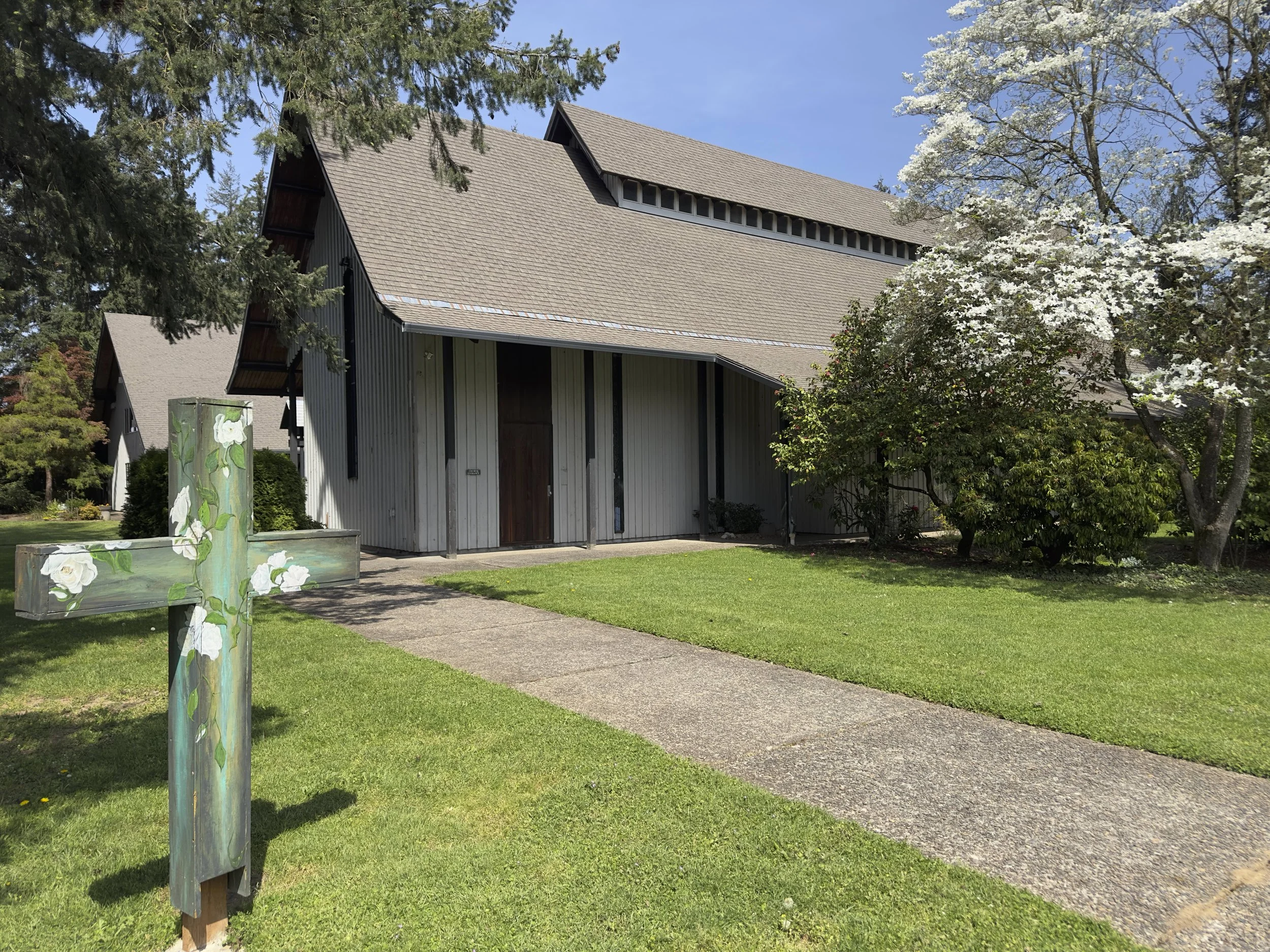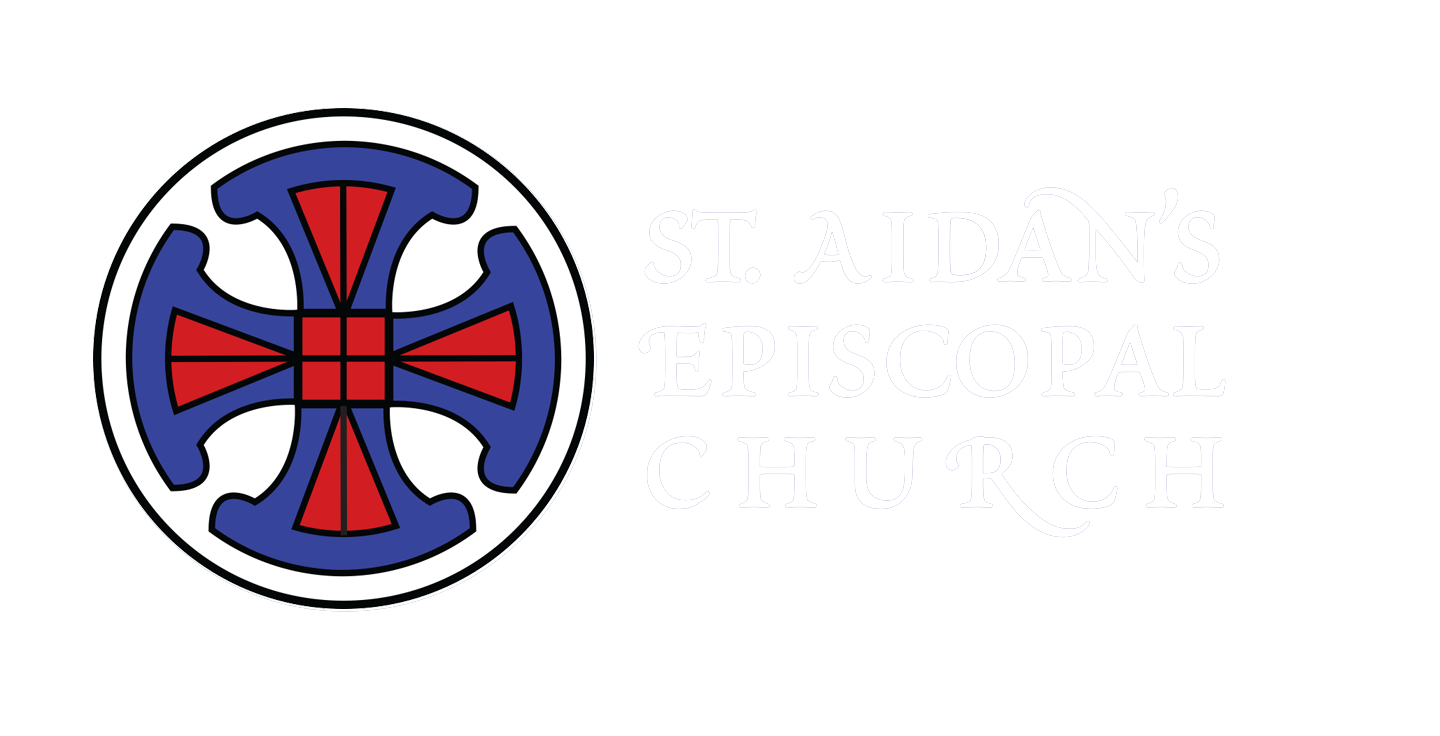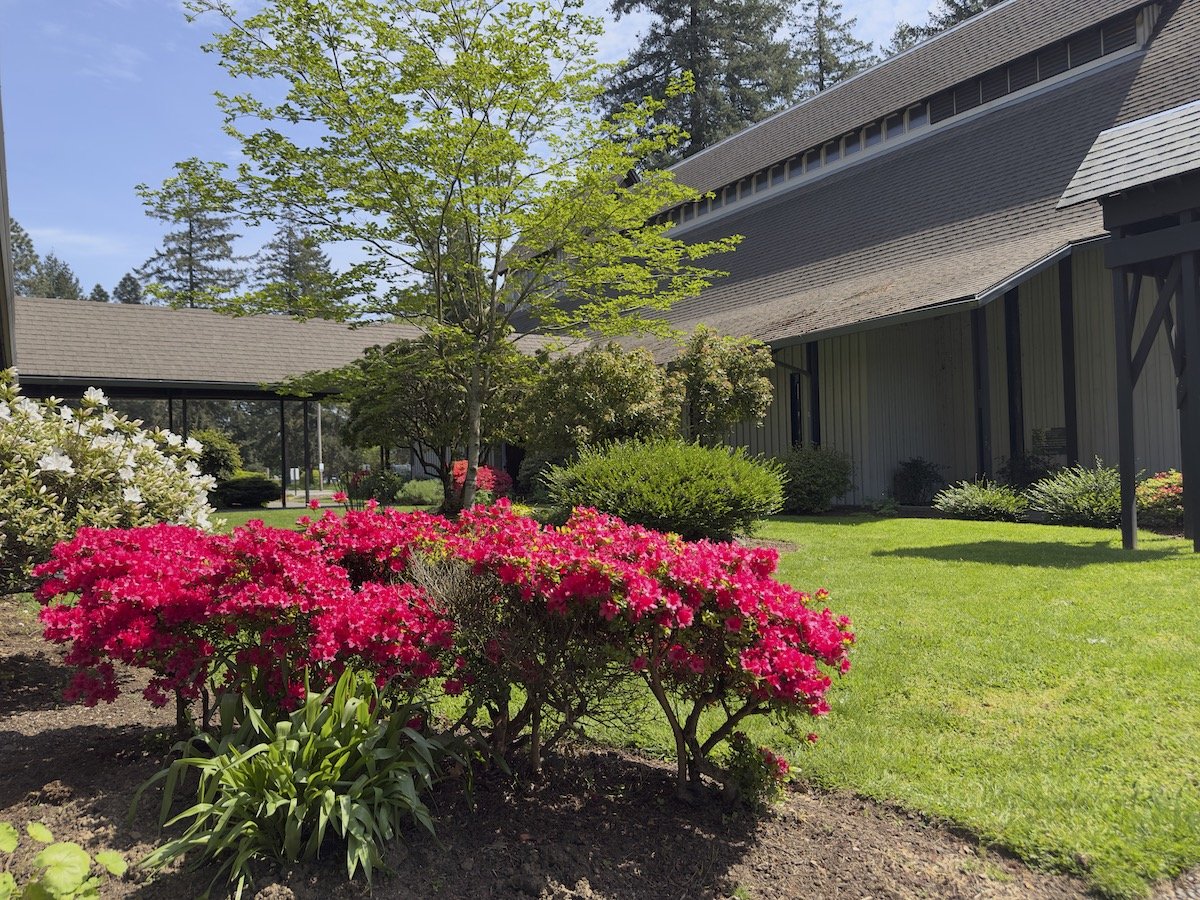
Our Parish
Celtic Identity
Saint Aidan’s is named for one of the great Celtic saints, Saint Aidan of Lindisfarne, who traveled from by boat from the Isle of Iona off the western coast of Scotland all the way around to the North Sea and down to the Isle of Lindisfarne, near the English city of Durham. Aidan felt God’s call and struck out for uncharted waters to see what God had in store for him and for the people he wanted to serve. He was a missionary and an adventurer; we strive to be the same.
One might call us a little bit “Celtic” because of our love for the earth and for all it nurtures and we embrace both a Celtic and a Benedictine tradition of spiritual life, lifting a common prayer for community, daily, weekly, and month after month, forming and strengthening our spiritual life, our faith, and our ministry in community. St. Aidan sets the direction for our Celtic ethos and out of that guidance we have developed a deep love of nature and all the flora and fauna it provides.
That’s why we are working to create natural habitat, using green products inside and outside on our campus. We’re a little bit Celtic in that we like to make beautiful music from organ, violin and flute, to electric guitars and drums. We like poetry and prose, beautiful scripture and ancient voices, all speaking beautiful truth still resonating thousands of years after their first voicing.
Celtic Theology
Celtic Christianity is unique and yet shares in Christian theology such as the incarnation, death, and resurrection of Christ. Celtic theology moves one into understanding a focus on the presence of the divine in the physical world. One can experience God in all of creation and thus in all of nature and all that is natural in the world. Therefore, since the presence of God is found in all things, then the natural world and every part of life, including human life, is made holy. We are surrounded by a spiritual presence, even in our daily chores and activities.
Celtic Festival
Each August around St. Aidan’s feast day we host a Celtic Festival for neighbors and friends, including friends we haven’t met. For more information as it develops, please check out our Celtic Festival page.
St. Aidan’s History
Thin Places
All the places infused with divine presence, the shrines and holy places of the world, are thought of as thin places, where the veil between the spiritual and the physical is at its most delicate and penetrable. It is the thin places we strive to find.
We observe the liturgical calendar beginning with Advent in December, Christmas and Epiphany, Lent, Holy Week and Easter to Pentecost, entering into ritual and celebration as set forth by history, tradition, and reason from hundreds of years gone before. As our Celtic roots direct, we think of all creation as holy, including humans, each of whom holds within goodness with the capacity to bring joy. Simply knowing this, we find opportunities to celebrate a sense of community based on loving and embracing other.
The creation of St. Aidan’s filled a need for a mission in the area north of Stark Street and east of 162nd in Gresham. This dream was fulfilled with the help of then-Bishop James Carman and a small group of people in the area. After several meetings, the first service was held at North Rockwood School on 172nd. Forty-three people attended the service.
In 1961, after many months of conducting services in school gymnasiums, the church moved into a portable building on N. E. 172nd. Church members met at this location for 18 months until the building was uprooted and moved to the land where Murdock Hall now stands.
In the summer of 1964, the church experienced a major shock when an arson fire destroyed the portable building. Fortunately, the flames did not reach the newly completed church building. Eventually, the portable building was replaced by the Parish Hall (later renamed Murdock Hall) and the Sunday School Building (later renamed Likowski Hall).
Any recorded history of St. Aidan’s Episcopal Church would be incomplete without mention of the major role Trinity Episcopal Church (now Trinity Cathedral) played in the establishment and development of St. Aidan¹s. Dr. Lansing Kempton, rector of Trinity, saw St. Aidan’s as a “church in the woods,” and his leadership was key in sponsoring the new church. Trinity also bought all furnishings in the church, including the pews and the organ.
The Josefa May Rees Memorial Garden, located between Likowski and Murdock Halls, was established May 28, 1972. Jo Rees was the wife of Rev. William R. Rees, who served St. Aidan’s rector pro-tem until the arrival of the Rev. James B. Likowski. Jo Rees was an inspiration to all who knew her during long years of a debilitating illness. Since she passed away in 1972, many members of the congregation have interred the ashes of their loved ones in this lovely garden.
The clergy who have served St. Aidan’s include: Thomas Murdock, 1962-1970; James B. Likowski, 1970-1982; David A. Lounsbury, Interim, 1982-84; Lauriston H. McCagg, 1985-l987; Richard Welsh, 1987-1994, and Scott Dolph, Interim, 1994-96, who in 1996 became our rector until 2014; Esme Jo Rymer Culver served as Rector until 2022; Raggs Regan was our Interim in 2022-23 and Sara Fischer became our Rector in 2025.




